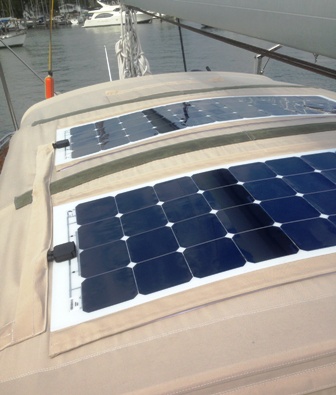Hello everyone! It’s me again asking more power questions (Hooray!) so I have all my devices in the boat now and I drew up a little excel sheet of how much everything can consume and the hours we plan to run the devices. Now by my (poorly done) math I should expect around 4 day of battery usage of my one GEL 100ah battery with all electronic do-dads on the boat. Now some things (like the fridge) were put at the average consumption, though when I wrote the excel sheet, I put both the initial cooling wattage and the idle wattage (I plan to run that in the house over night before a trip to get the fridge to temp then put it in the boat).
So, my questions; if I add another battery in parallel, in theory it should give me 4 days of capacity. If I add another battery, can I put a 200w solar panel on the boat and expect the batteries to be able to take the possible 30amp it can (potentially) produce. And can I put the same solar panel on just one battery for now (Until I buck up and buy the other one) and expect one battery to withstand it? Also (I know sorry) I have a 10a (2 bank) battery charger that I am hooking up, if I get two batteries in parallel can I put one bank on each battery?

So, my questions; if I add another battery in parallel, in theory it should give me 4 days of capacity. If I add another battery, can I put a 200w solar panel on the boat and expect the batteries to be able to take the possible 30amp it can (potentially) produce. And can I put the same solar panel on just one battery for now (Until I buck up and buy the other one) and expect one battery to withstand it? Also (I know sorry) I have a 10a (2 bank) battery charger that I am hooking up, if I get two batteries in parallel can I put one bank on each battery?
Attachments
-
54.7 KB Views: 167





